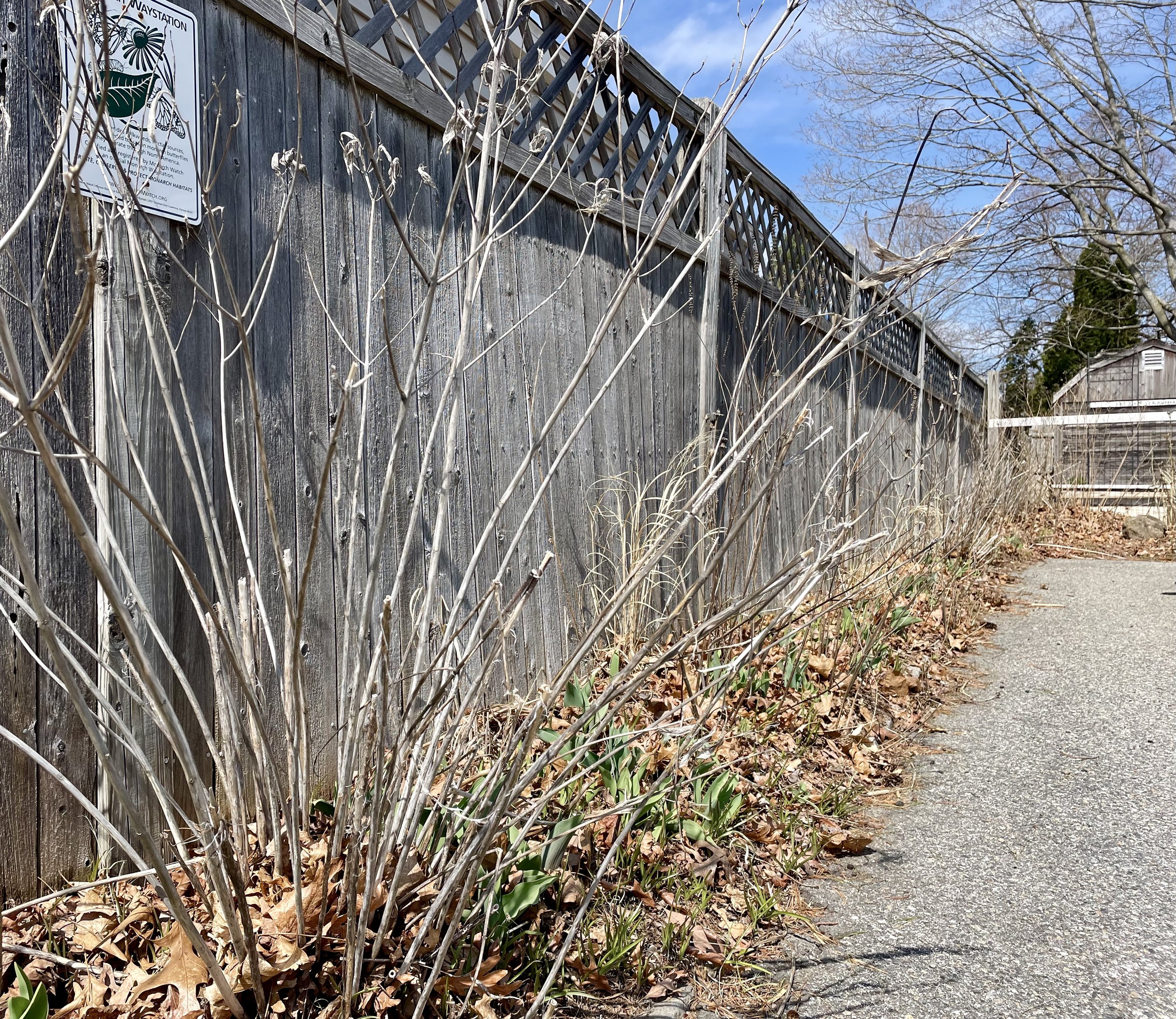A little bit “more and better” and spring garden restart.
This is how things are looking at my house. ☀️ 🌱
I’ve been periodically checking to make sure that I do not have too many leaves by gently pulling them back with my hands and checking the color of the new growth. I’ll cut back grasses and small stems around May 1st. If it starts to feel like there’s too much leaf cover and the basil foliage is struggling, I’ll remove some leaves. If I had seed down —or wanted to seed—I’d clear away most of the leaves to ensure good soil-to-seed contact and plenty of sunshine.
A little bit “more and better” on my own property.
A little bit more…
Rain barrel - on order through Town of Hamilton’s program
Water feature - coming soon from Outlaw Ridge Granite
Early start on vegetable garden - Detailed plan is done (see below) Get in touch if you’d like me to create a custom plan for you.
Little Free Library box - for seed give away, yard transformation info…and free books. Ready to be installed.
A little bit better…
This winter, I completed the Pollinator Stewardship Certification with the UMass Extension School. As part of the program, I conducted a site assessment on my own property—it came back as “high quality habitat” with a score of 110 (the range is 105–148).
In my meeting with the program director, we talked about small, practical ways to further improve my site—especially in a downtown location where space is limited.
What to do with fall leaves. Last year, I left all the leaves from four big sugar maples. It was too much for the garden beds, so now they’re piled on the patio and along the garden edges. Once it’s warmer, I’ll mulch and spread them—but it’s a lot, and it may exceed what my garden can handle.
From my conversation with the bee ecologist, I learned that if you need to remove some leaves, it’s best to take the first ones that fall in early autumn. That’s because most overwintering insects settle into the leaf litter in late fall to early winter, so disturbing early leaves is less impactful to their life cycles. I also would like to ask this question to the Lepidoptera (butterflies and moths) ecologist because I am curious if their answer will be the same!
Other takeaways from the program
A pollinator community depends not just on what’s planted on your property, but also what surrounds it. You could have the same plants in 10 different places and end up with very different insect communities.
Supporting pollinators isn’t just about adding things—it’s also about removing barriers, like landscape fabric, bark mulch, and pesticide use.
Social wasps don’t reuse old nests. The queen overwinters elsewhere, then finds a new location in spring.
Yes to adding specialist bee plants to residential gardens —most wasps are tiny and tend to keep to themselves. 😊
From other classes this winter (NDAL and Kelly Norris)
Continue to diversify plantings while keeping the overall design legible and coherent.
A new way to plant directly into an existing lawn: mow or string-trim the grass heavily to weaken its root system, then spot-plant natives and manage (mow/string-trim) to keep the grass down. It works best where turf is already struggling.
Cool phrases I wrote down:
“Learning over time by experimenting and paying attention.”
“Gardening in stewardship.”
“Ground your aesthetic experience in ecological awareness.”
“What makes here look different from there?” KN
“Just keep planting.” KN
“What would be worth stopping…a well-placed contradiction.” KN
Spring Garden Restart.
Butterfly Gardens
Cut backs are best when nighttime temps warm up, likely by the first week of May.
Stems at least 1/8" thick, which will persist through the season and into 2026, can be cut to 18" (knee height) for stem-nesting insects to overwinter in.
Grasses can be cut back to your preferred height, and dead material cleared out. For larger grasses, check for bird nests first : )
General debris like small sticks and leaves can be left in place, raked out, mulched with a lawn mower, or relocated.
Vegetable and Herb Garden
Raised beds are topped with a compost/earth worm casting mix and all ready to plant.
Spring planting Plan - cool season crops
Arugula*
Lettuce mixes*
Spinach*
Radishes*
Sugar snap peas at trellis*
Carrots*
Melon***
Cucumber***
Herbs
perennial chives
perennial thyme
Dill*
Cilantro**
Basil**
Hungarian bread seed poppy*
Edible flowers
Batchelor buttons*
Johnny jump-ups**
Calendula*
Borage**
Zinnia**
*Direct sown seeds in garden now
**Direct sown after first frost date (May 23rd)
***Direct sown 2 weeks after first frost date
Spread the word…
I have space for seven more clients this year. If you’re interested, click the button below— if you know someone who might be — please pass this along. 🌱 🌸 🦋




